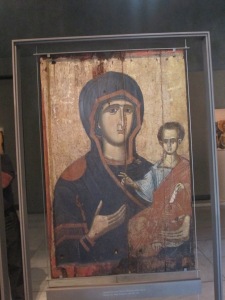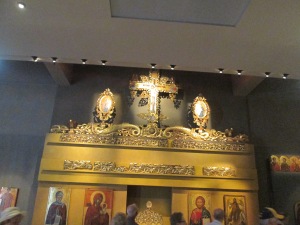See the previous post:
Trip 12: Post 6 …. GREECE: Day 4 = May 12th May … Dardanelles and Mt. Athos
___________________________________________________________________________
Note: I would like to share with you through these few words, photographs and hyperlinked websites, a 3 Dimensional experience as though you were actually there with us. Click on any photograph and it should enlarge to different size ….. at least half screen or size full screen. It will be clearer in detail than the photo on the post. It will be as if you were really there looking at the actual scene. You are an arm chair traveller with us.
If you would also like to see the post in a larger or smaller size, I suggest you follow this procedure: If you right-handed, with your left hand, press down continuously on the Control Function Key with your left hand and with your right hand, move the little cursor wheel either forwards or backwards to make the text in the post larger or smaller.
____________________________________________________________________________
_________________________________________________________________________________________________
The Museum of Byzantine Culture
From Wikipedia, the free encyclopedia:
The Museum of Byzantine Culture is a museum in Thessaloniki, Central Macedonia, Greece, which opened in 1994. To design the museum, a nationwide architectural competition was announced in 1977. The competition was ultimately won by the entry of Kyriakos Krokos. Construction of the building began in March 1989, and was completed in October 1993. Antiquities from the Byzantine & Christian Museum in Athens were transferred in June 1994, some of them being displayed in the museum’s inaugural exhibition, “Byzantine Treasures of Thessaloniki: The Return Journey”. The museum finally opened on 11 September 1994.
Exhibits
Opening in 1994, the museum currently has three permanent exhibitions. The first, “Early Christian Churches”, focuses on the design and decoration of churches in early centuries of Christianity. “Early Christian Cities and Dwellings”, presents aspects of economic life, domestic handicrafts, houses, and food and clothing of early Christians, and finally, “From the Elysian Fields to the Christian Paradise” focuses on cemeteries of early Christians, jewellery, sepulchral architecture and painting, cult customs, and clay and glass objects recovered from excavated graves.
_______________________________________________________________________________________
2. The second, of the three permanent exhibitions:
“Early Christian Cities and Dwellings”, presents aspects of economic life, domestic handicrafts, houses, and food and clothing of early Christians






____________________________________________________________________________________________
3. The third, of the three permanent exhibitions:
From the Elysian Fields to the Christian Paradise” focuses on cemeteries of early Christians, jewellery, sepulchral architecture and painting, cult customs, and clay and glass objects recovered from excavated graves.

____________________________________________________________________________________________
AGRICULTURE AND THE COUNTRYSIDE:
___________________________________________________________________________________________
BYZANTIUM AFTER BYZANTIUM:


_____________________________________________________________________________________________
See the next post:
Trip 12: Post 11: GREECE: Day 6 = 13th May …. Thessaloniki … The streets
______________________________________________________________________________________________





















